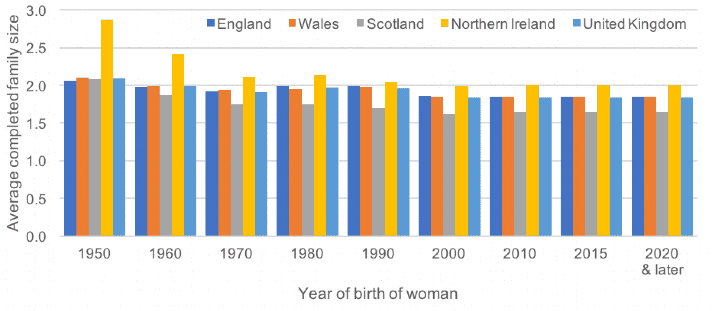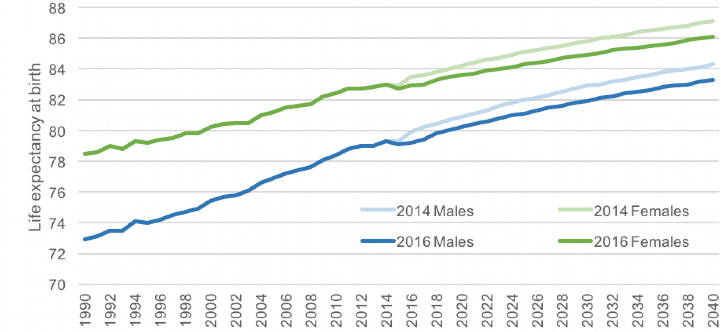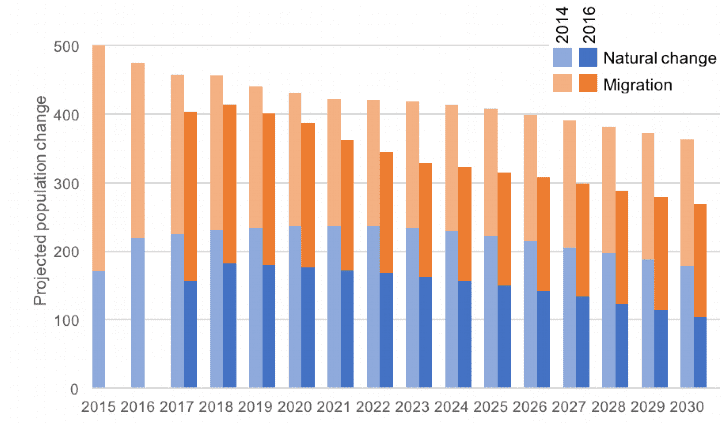New Local Plan targets are now closely linked to demographic projections produced by the Office for National Statistics. The standard calculation of a minimum housing need for each local authority was brought in with the new NPPF at the end of July. That calculation depends on household projections, which in turn depend on population projections.
Population projections are revised every two years. The latest national projection was released in October 2017, based on the 2016 estimates of population. It contained a few surprises; ones that the housing industry will need to pay much more attention to in future.
The biggest surprise was the much gloomier outlook for ‘natural change’, that is, births and deaths. The long-term completed family size has been revised down across Great Britain by 0.05 children per woman since the 2014-based projections to 1.85 in England & Wales and 1.65 in Scotland. In Northern Ireland it remained at 2.00 children per woman.



